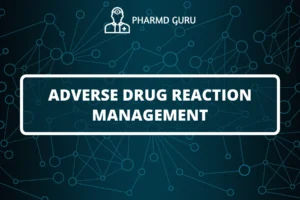Drug information queries are common in healthcare settings, as healthcare professionals, patients, and caregivers seek accurate and reliable information about medications. When faced with a drug information query, it is essential to follow a systematic approach to ensure a thorough and evidence-based response. In this article, we will outline a step-by-step approach to effectively answer drug information queries.
SCROLL DOWN TO THE BOTTOM OF THE PAGE FOR ACTUAL NOTES
TABLE OF CONTENTS:
- Introduction
- Understanding the Query
- Gathering Relevant Information
- Evaluating the Evidence
- Formulating a Response
- Providing Supporting References
1. Introduction
Responding to drug information queries requires a systematic approach to ensure that the information provided is accurate, reliable, and tailored to the specific query. By following a structured process, healthcare professionals can effectively address the query and assist in making informed decisions regarding medication use.
2. Understanding the Query
The first step in answering a drug information query is to clearly understand the question or concern being raised. It is important to actively listen or read the query and clarify any ambiguous or unclear points. Understanding the context, such as the patient’s medical history, current medications, and specific needs, will help in providing a relevant and appropriate response.
3. Gathering Relevant Information
Once the query is understood, the next step is to gather relevant information from credible sources. This involves conducting a comprehensive literature search using reputable drug databases, clinical guidelines, scientific journals, and other evidence-based resources. It is important to consider the most recent and relevant information to ensure the response is up-to-date and accurate.
4. Evaluating the Evidence
After gathering the information, it is crucial to critically evaluate the evidence. Assess the quality of the sources, consider the study design, sample size, and relevance to the query. Differentiate between primary research studies, systematic reviews, and expert opinions. By critically appraising the evidence, you can ensure that the response is based on the best available information.
5. Formulating a Response
Using the gathered and evaluated information, formulate a clear and concise response to the drug information query. Break down the response into key points, addressing the query directly and providing supporting evidence where applicable. Use plain language and avoid medical jargon to enhance understanding. If there are any uncertainties or limitations in the evidence, acknowledge them and provide alternative viewpoints if available.
6. Providing Supporting References
To enhance the credibility and transparency of the response, provide supporting references for the information provided. Include the titles of relevant articles, clinical guidelines, or other reputable sources. This allows the recipient of the response to further explore the topic and verify the information independently.
ACTUAL NOTES




